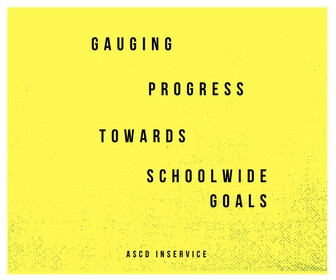With all the assessments being thrown at us, it’s hard to keep track of what really matters. What do we really care about? What sort of assessments reflect or do not reflect those values? While we might not have any power over some of the assessments that we implement in our schools, there is an opportunity to not add additional assessments to reflect what we really value, but instead to identify and assess assessments in the curriculum to ensure not only vertical alignment, but alignment to what matters.
Transdisciplinary and Disciplinary Goals
Jay McTighe and Grant Wiggins advocates for creating long-term transfer goals that help to provide a focus for our curriculum and focus on outcomes. In his article “From Common Core Standards to Curriculum: Five Big Ideas,” he writes “Transfer Goals identifies the effective uses of content understanding, knowledge, and skill that we seek in the long run; i.e., what we want students to be able to do when they confront new challenges—both in and outside of school. They reflect the ultimate goals, the reason we teach specific knowledge and skills.” In their Understanding by Design curriculum framework, teachers select the transfer goals, and design units to align towards them. This part isn’t anything knew, but what if we thought about this work in a more “macro” sense – part of a whole school curricular alignment.
At Shanghai American School, we have worked toward articulating our long-term transfer goals. We have identified Transdisciplinary transfer goals, such as Ethical Global Citizen and Effective Communicator. We have also started writing Performance Indicators to break down these ideas into demonstrable goals to assess across different grade level bands. We have also begun the proves of creating Disciplinary Transfer goals, which are specific to our Departments. Our departments got together in small teams and examine not only our Standard documents, but also other curricular outcomes, such as IB aims. We’ve drafted some ideas, and will now work towards the refinement stage. These transdisciplinary and disciplinary transfer goals, will be the outcomes we expect for all students.
Assessing Our Progress Through Cornerstone Tasks
How often did we really know if our students are becoming the students we articulate in our mission statements? Often, we create these ideas such as “critical thinker” and “ethical global citizen,” perhaps even in the form of a transfer goal, but we have no way of knowing if our students are making progress towards these goals. We may create great posters, banners and buy-in, but what’s that next step toward meeting the mission of our school. Yes, we might be doing project-based learning, or creating schoolwide rubrics for these skills, but they may or may not be intentional in terms of a vertical journey and articulation of curriculum.
In their book “Leading Modern Learning,” Jay McTighe and Greg Curtis share their process of implementing Cornerstone Tasks that assess student progress towards long transfer. These cornerstone tasks “anchor the curriculum,” and ask students to apply “their learning as a means of providing evidence of their ability to transfer” disciplinary and transdisciplinary goals. The tasks might be integrated or provide evidence of transfer for one subject. We will work on crafting and identifying these tasks at Shanghai American School next year.
Looking at Student Work
One cornerstone tasks have been implemented, it is critical that teachers gather in teams to look at the student worked produced from those tasks. While looking at student work is nothing new, the scope and implications of the conversation are a bit different. By examining this type of student work, we can assess our students’ ability to transfer the long-term outcomes of our school, our shared upon outcomes as a whole. We can reflect about how everyday teaching supports students towards those outcomes, and how we all support grown towards transfer. We can also collect and curate powerful evidence of student learning aligned toward lofty and inspiring goals.
By identifying long term transfer goals, creating and aligning tasks, and looking as the corresponding student work, schools can have a better sense of student achievement toward school goals and outcomes. We can focus on larger, big picture outcomes that matter for all students, and really reflect of our work towards achieving our mission and vision.








